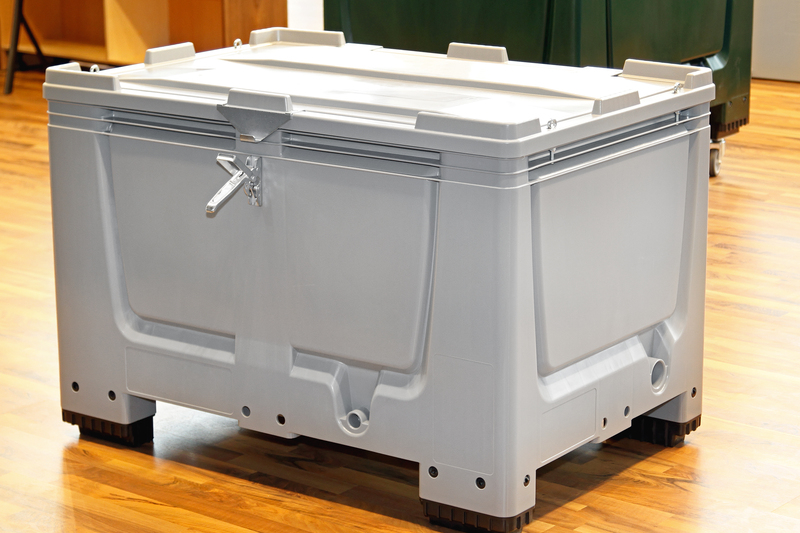Exploring the Intricacies of Piano Relocation: Get Professional Assistance
Posted on 02/06/2025
Exploring the Intricacies of Piano Relocation: Get Professional Assistance
Moving a piano is no ordinary task. Whether it's a cherished upright, a grand orchestral piece, or a treasured family heirloom, a piano is both a delicate musical instrument and a heavy, complex object. In this comprehensive guide, we'll delve into the intricacies of piano relocation and demonstrate why you should always seek professional assistance for such an important task. From preparation steps to the challenges of transportation and expert tips, let's uncover the best practices for moving your piano safely and securely.
Why Piano Relocation is More Complex Than You Think
At first glance, moving a piano might appear straightforward -- after all, people relocate furniture all the time. However, piano relocation is a meticulous process due to several unique challenges that regular furniture simply does not present:
- Weight and Size: Pianos range from 300 to over 1,200 pounds, making them one of the heaviest items in most homes and music venues.
- Fragile Internal Components: With over 10,000 moving parts, even small shifts can cause internal damage, affecting the instrument's sound and value.
- Shape and Balance Issues: The weight distribution in pianos is uneven, which complicates lifting and moving, especially around tight corners or up staircases.
- Risk of Injury: Improper handling of a piano can result in serious injuries -- not just to the movers, but also damage to the piano itself, surrounding walls, and floors.
Given these complexities, it becomes clear why professional piano movers are essential.

The Risks of DIY Piano Moving
Many homeowners and amateur musicians have attempted to move their pianos without expert help, but the statistics and stories are cautionary. Below are the key risks associated with DIY piano moving:
- Instrument Damage: Dropping a piano even a few inches can snap strings, crack the soundboard, or damage intricate mechanisms inside.
- Property Damage: Moving a piano without specialized equipment can result in scratched floors, gouged door frames, and holes in walls.
- Personal Injury: The heavy, awkward shape of pianos makes lifting hazardous for back injuries, crushed fingers, and even broken limbs.
Many insurance policies will not cover damages caused by improper relocation attempts. This is one of many reasons to entrust this job to experienced professionals.
Benefits of Hiring Professional Piano Relocation Services
Professional piano movers bring a wealth of experience and specialized tools that enable them to relocate pianos efficiently and safely. Here is why contacting expert piano movers is the best choice:
- Specialized Equipment: Piano movers use piano skids, moving pads, ramps, and secure straps tailored for various types of pianos.
- Expertise in Navigation: Navigating tight staircases, doorways, and logistical constraints is second nature to trained professionals.
- Insured Services: Reputable piano relocation services are fully insured for damages and liability, giving you peace of mind.
- Caring for Your Investment: Professionals understand the emotional and financial value of your instrument, treating it with the utmost care.
- Efficiency: With preparation and experience, professional movers can complete the job quickly and with minimal disruption.
Professional piano relocation not only ensures the safe transport of your instrument but also helps preserve its value and performance.
Types of Pianos and Their Relocation Challenges
Each type of piano presents its own set of relocation challenges. Here's a closer look at the nuances for different types:
Upright Pianos
- Heavy but more compact, typically easier to maneuver through most doors and spaces.
- Still require careful handling to avoid tipping and damaging the pedals and soundboard.
Baby Grand and Grand Pianos
- Large, heavy, and often with unwieldy shapes that require disassembly.
- The legs and pedals must be removed and wrapped securely.
- Usually require dismantling and reassembly by experts to avoid permanent damage.
Digital Pianos
- Lighter than acoustic counterparts, but still need careful transport due to electronic components.
- Sensitivity to moisture and shock requires expert packing and protection.
Each of these piano types requires a tailored approach, further emphasizing the need for professional piano movers.
Step-by-Step: How Professional Piano Relocation Works
To appreciate the care professionals bring to piano moving, let's walk through a typical relocation process:
-
Initial Assessment and Planning
- Moving specialists visit your home to evaluate the piano, entryways, and route from start to finish.
- Potential obstacles (stairs, narrow halls, etc.) are identified to create a customized moving plan.
-
Preparation of Your Instrument
- Any required disassembly (removing legs, securing the lid, wrapping fragile parts) is performed using protective materials.
-
Safe Transportation
- The piano is loaded onto specialty dollies and skids that evenly distribute weight and protect from shocks.
- Secure harnesses and padding are used to ensure stability during transit.
-
Careful Unloading and Setup
- Upon arrival, the team reverses the preparation process to reassemble and position your piano in its new location.
- Final checks are performed to ensure the instrument's integrity.
Attention to detail and specialized expertise at every stage distinguish professional piano relocation from DIY methods.
Frequently Asked Questions About Piano Moving
How much does professional piano relocation cost?
The cost of piano relocation services varies depending on the type of piano, the distance to be moved, accessibility issues, and any special needs (such as crating or storage). On average, local moves can range from $200-$600 for upright pianos and up to $1,000 or more for grand pianos requiring disassembly. Long-distance moves increase accordingly.
How do I prepare my piano for the movers?
- Clear the area around the piano to provide easy access.
- Remove loose items, sheet music, or decorations from the piano top.
- Inform the movers of any special handling requirements or past repairs.
- Ensure pathways, hallways, and entryways are unobstructed and safe.
Is it necessary to tune my piano after relocation?
Yes. Even with the utmost care, changes in temperature, humidity, and vibrations during transit can affect a piano's tuning. It's recommended to wait a few weeks after your move to allow your piano to acclimate before having it professionally tuned.
Can any moving company handle piano relocation?
Not all moving companies are equipped or experienced enough for specialty piano moving. Always choose a mover with proven piano relocation expertise, proper insurance, and a strong reputation.
How to Choose the Right Professional Piano Movers
Selecting the right team for moving your piano is important for both the safety of your instrument and your peace of mind. Consider the following when choosing a piano relocation service:
- Experience: Look for companies who specialize in piano moves and have years of hands-on experience.
- Equipment: Ensure they own and use state-of-the-art, piano-specific tools.
- Insurance and Licensing: Verify that the company is licensed and properly insured for specialty moves.
- Reviews and Testimonials: Check online reviews, testimonials, and seek recommendations from local music schools or piano dealers.
- Transparent Pricing: Request a detailed quote upfront to avoid hidden costs.
The right professional piano mover treats every instrument as a priceless item, delivering both expertise and care.
The Importance of Insurance During Piano Relocation
Because pianos represent significant financial and sentimental investments, insurance coverage is crucial during relocation. Insured movers offer various levels of protection:
- Basic Coverage: This may only cover up to a certain amount per pound, which might not be sufficient for valuable pianos.
- Declared Value Protection: Owners can declare their piano's full value; this raises the compensation in case of irrevocable damage.
- Full Replacement Protection: Comprehensive policies ensure that repairs or replacements are covered, giving total peace of mind.
Discuss the available insurance policies prior to your move and choose the coverage level that best protects your prized instrument.

Pro Tips for Stress-Free Piano Moving
- Schedule ahead of time: Secure your moving date weeks in advance, especially if you need to relocate during busy seasons.
- Communicate thoroughly: Share all pertinent details about your piano and home layout with the moving company.
- Plan for climate control: Pianos are sensitive to temperature and humidity. Ensure both moving trucks and the new location offer climate stability.
- Have your piano evaluated post-move: After relocation, arrange for a tuner or technician to check your piano for any issues.
- Document condition: Take photos before and after the move for your records and in the unlikely case you need to file an insurance claim.
Conclusion: Entrusting Your Piano to the Experts
In summary, the art of piano relocation involves far more than muscle and a moving truck. It demands precision, knowledge, and the right equipment -- qualities that seasoned piano movers provide every day. By engaging professional piano relocation services, you are making a wise investment in the longevity and well-being of your beloved instrument.
Don't risk injury or damage; let skilled experts handle your piano moving needs. From initial assessment to careful reassembly and post-move care, professional movers ensure a seamless transition, allowing you to enjoy your piano for years to come.
If you're planning a move, prioritize care, expertise, and reliability -- get the professional assistance your piano deserves!



